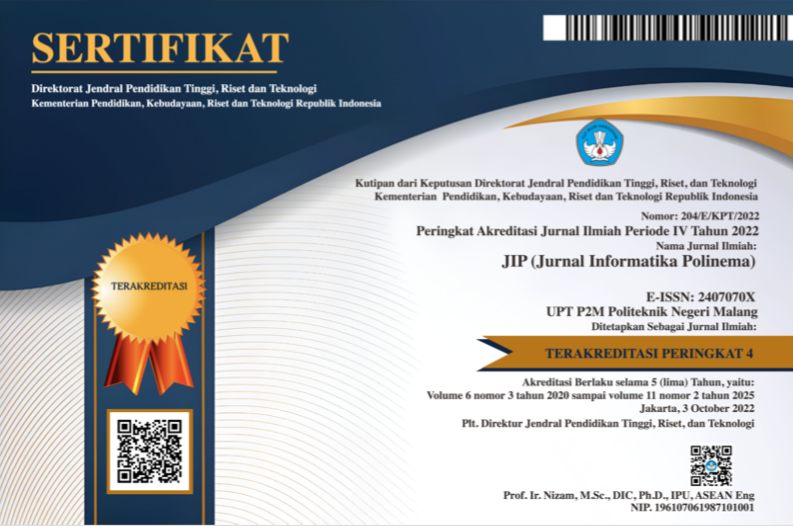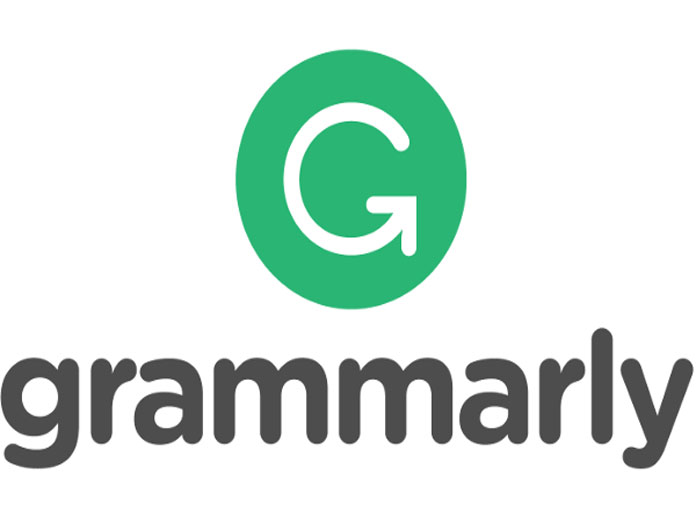SEGMENTASI PEMBULUH DARAH PADA CITRA RETINA MATA MENGGUNAKAN METODE REGION GROWING
Abstract
Abstrak memuat Segmentasi citra merupakan pengolahan citra yang sering digunakan untuk memisahkan objek utama dengan objek diluarnya. Segmentasi citra retina mata sudah dilakukan beberapa peneliti agar mempermudah para medis dalam mengidentifikasi penyakit dari dini. Metode segmentasi Region Growing diharapkan dapat menghasilkan segmentasi pembuluh darah dengan akurasi yang tinggi sehingga saat para medis menggunakan aplikasi ini untuk pendeteksian penyakit dapat menghasilkan diagnosis yang akurat dan dalam waktu yang lebih cepat. Data citra retina mata dalam penelitian ini melalui beberapa tahap praprosesing sebelum masuk ke algotirma Region Growing. Praprosesing tersebut adalah resizing, filtering dan thresholding. Hal ini dilakukan agar citra dapat dibaca dengan mudah oleh algoritma Region Growing. Region Growing kemudian akan membaginya menjadi beberapa region yang telah diberi pembatas antar region. Algoritma ini membantu menemukan penyebaran titik-titik yang dinginkan dengan membandingkan nilai piksel titik awal dengan titik tetangganya, sehingga titik-titik yang diinginkan akan bergabung dalam region yang sama.Pada tahap akhir, hasil segmentasi akan diuji keakurasiannya dengan perhitungan akurasi PSNR (Peak Signal to Noise Ratio). Hasil segmentasi yang dilakukan pada 15 data dari 134 data testing yang diujikan berhasil menunjukkan rata-rata nilai PSNR sebesar 50,9605 dB. Percobaan-percobaan telah dilakukan dan menyimpulkan bahwa metode Region Growing dapat memperlihatkan pembuluh darah tebal dengan relatif baik pada berbagai macam citra retina mata.
Downloads
References
Amin, J., Sharif, M., Raza, M., Saba, T., & Anjum, M. A. (2019). Brain tumor detection using statistical and machine learning method. Computer Methods and Programs in Biomedicine, 177, 69–79. https://doi.org/10.1016/j.cmpb.2019.05.015
Ani Brown Mary, N., & Dejey, D. (2018). Classification of Coral Reef Submarine Images and Videos Using a Novel Z with Tilted Z Local Binary Pattern (Z⊕TZLBP). Wireless Personal Communications, 98(3), 2427–2459. https://doi.org/10.1007/s11277-017-4981-x
Ansari, M. A., Mehrotra, R., & Agrawal, R. (2020). Detection and classification of brain tumor in MRI images using wavelet transform and support vector machine. Journal of Interdisciplinary Mathematics, 23(5), 955–966. https://doi.org/10.1080/09720502.2020.1723921
Bilenia, A., Sharma, D., Raj, H., Raman, R., & Bhattacharya, M. (2019). Brain tumor segmentation with skull stripping and modified fuzzy C-means. In Information and Communication Technology for Intelligent Systems, Smart Innovation, Systems and Technologies (Vol. 106). https://doi.org/10.1007/978-981-13-1742-2_23
Khawaja, A., Khan, T. M., Khan, M. A. U., & Nawaz, S. J. (2019). A Multi-Scale Directional Line Detector for Retinal Vessel Segmentation. Sensors, 19(22), 4949. https://doi.org/10.3390/s19224949
Latif, G., Awang Iskandar, D. N. F., & Alghazo, J. (2018). Multiclass Brain tumor classification using region growing based tumor segmentation and ensemble wavelet features. ACM International Conference Proceeding Series, 67–72. https://doi.org/10.1145/3277104.3278311
Manic, K. S., Hasson, F. H., Al Shibli, N., Satapathy, S. C., & Rajinikanth, V. (2018). Improving network availability - A design perspective. In Third International Congress on Information and Communication Technology ICICT 2018, London. https://doi.org/10.1007/978-981-13-1165-9
Mawaddah, A. H., Atika Sari, C., Ignatius Moses Setiadi, D. R., & Hari Rachmawanto, E. (2020). Handwriting Recognition of Hiragana Characters using Convolutional Neural Network. 2020 International Seminar on Application for Technology of Information and Communication (ISemantic), 79–82. https://doi.org/10.1109/iSemantic50169.2020.9234211
Raju, M., Pagidimarri, V., Barreto, R., Kadam, A., Kasivajjala, V., & Aswath, A. (2017). Development of a deep learning algorithm for automatic diagnosis of diabetic retinopathy. Studies in Health Technology and Informatics, 245, 559–563. https://doi.org/10.3233/978-1-61499-830-3-559
Review, C. A., Kandel, I., & Castelli, M. (2021). applied sciences Transfer Learning with Convolutional Neural Networks for Diabetic Retinopathy Image.
Satapathy, S. C., Sri Madhava Raja, N., Rajinikanth, V., Ashour, A. S., & Dey, N. (2018). Multi-level image thresholding using Otsu and chaotic bat algorithm. Neural Computing and Applications, 29(12), 1285–1307. https://doi.org/10.1007/s00521-016-2645-5
Song, Y., Ji, Z., Sun, Q., & Zheng, Y. (2017). A Novel Brain Tumor Segmentation from Multi-Modality MRI via A Level-Set-Based Model. Journal of Signal Processing Systems, 87(2), 249–257. https://doi.org/10.1007/s11265-016-1188-4
Tymchenko, B., Marchenko, P., & Spodarets, D. (2020). Deep learning approach to diabetic retinopathy detection. ICPRAM 2020 - Proceedings of the 9th International Conference on Pattern Recognition Applications and Methods, 501–509. https://doi.org/10.5220/0008970805010509
Zaw, H. T., Maneerat, N., & Win, K. Y. (2019). Brain tumor detection based on Naïve Bayes classification. Proceeding - 5th International Conference on Engineering, Applied Sciences and Technology, ICEAST 2019, 1–4. https://doi.org/10.1109/ICEAST.2019.8802562
Zhou, W., Wu, C., Yi, Y., & Du, W. (2017). Automatic Detection of Exudates in Digital Color Fundus Images Using Superpixel Multi-Feature Classification. IEEE Access, 5(1), 17077–17088. https://doi.org/10.1109/ACCESS.2017.2740239
Copyright (c) 2022 Muslih Muslih

This work is licensed under a Creative Commons Attribution-NonCommercial 4.0 International License.
Copyright for articles published in this journal is retained by the authors, with first publication rights granted to the journal. By virtue of their appearance in this open access journal, articles are free to use after initial publication under the International Creative Commons Attribution-NonCommercial 4.0 Creative Commons CC_BY_NC.
















